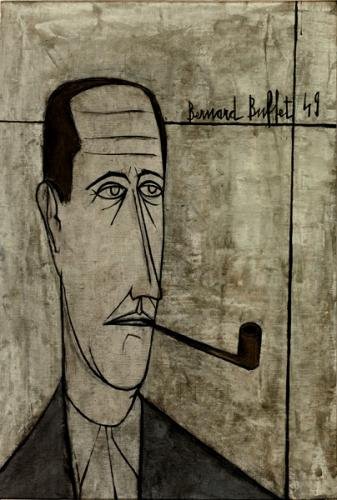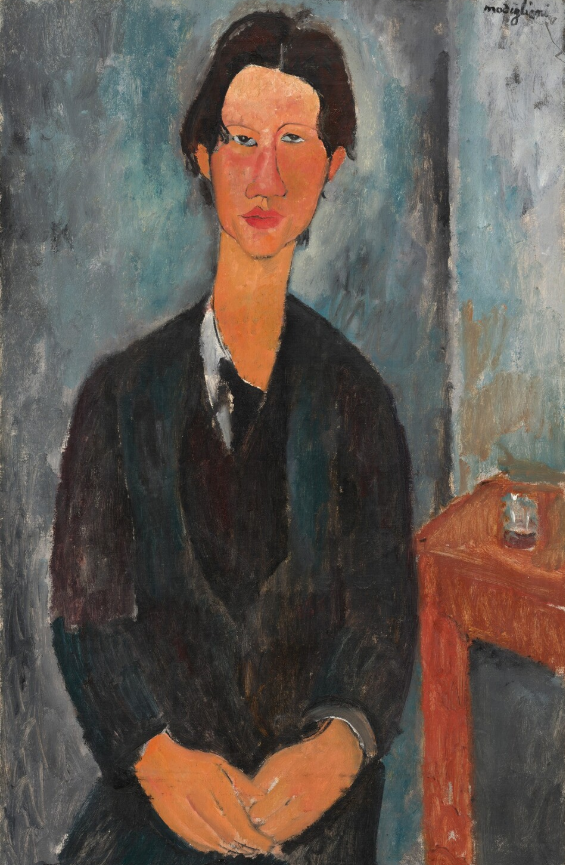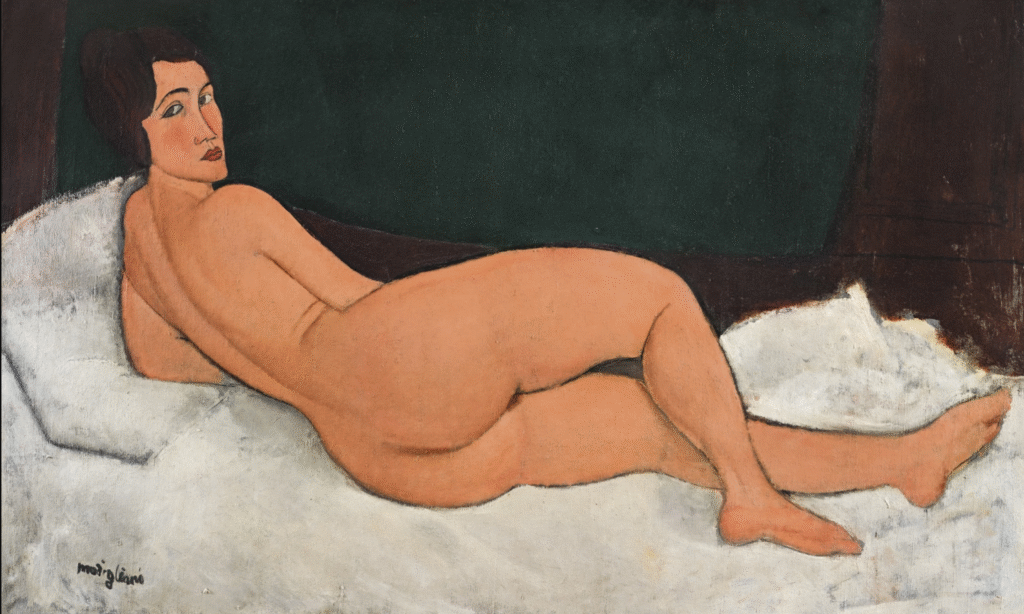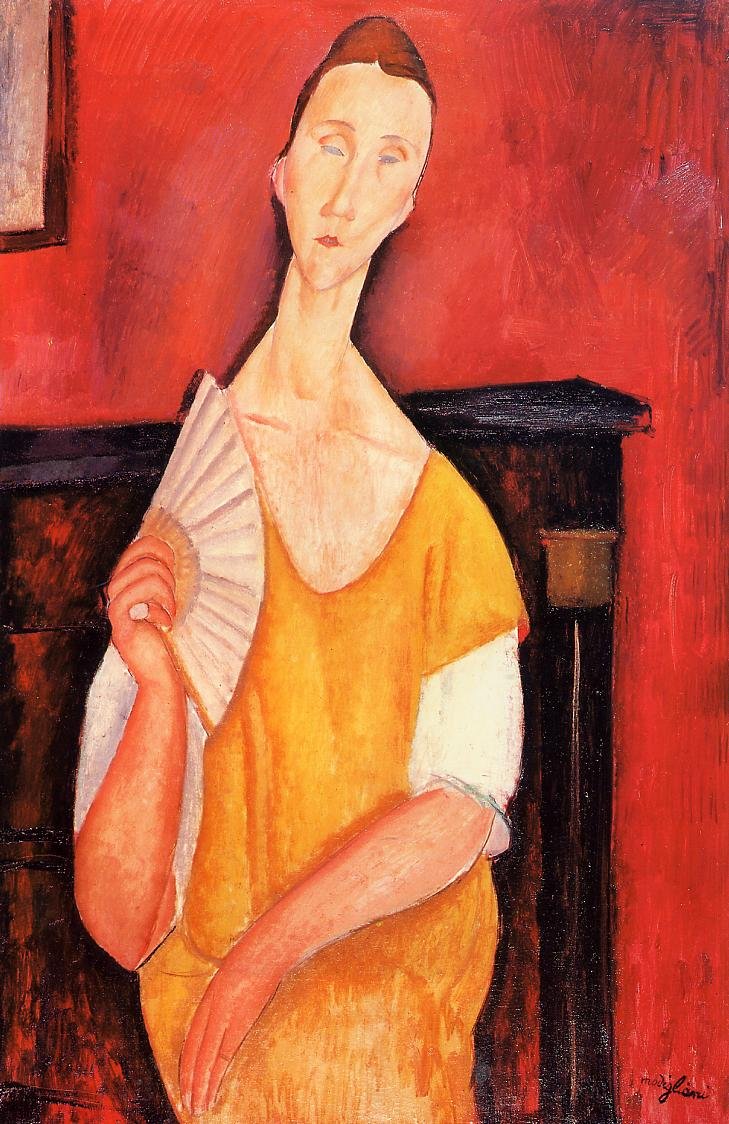Almost fifteen years ago, “La Femme à l’Éventail,” also known as “Woman with a Fan,” by Amadeo Modigliani and four other paintings by modern masters, were stolen from the Musée d’Art Moderne de la Ville de Paris (MAM Paris). Similar to the theft of a Delacroix and other paintings from the Montreal Museum of Fine Arts and the theft of a Renoir and other paintings from the Hotel de Ville in Bagnols-sur-Cèze, the thief gained access to the museum at night and took advantage of alarm malfunctions.
A Little History About Where The Theft Happened
MAM Paris is one of fourteen City of Paris museums incorporated in the public institution Paris Musées. MAM Paris, located in the eastern wing of the Palais de Tokyo in Paris’ 16th arrondissement, is dedicated to modern and contemporary art of the 20th and 21st centuries. It houses more than 15,000 works, including monumental murals by Henri Matisse and Raoul Dufy. The Palais de Tokyo was initially constructed for the International Exhibition of Arts and Technology of 1937, and the MAM Paris was inaugurated in that space in 1961.

The core of MAM Paris’ collection at that time was a bequest from Dr. Maurice Girardin, a Paris art dealer who built a spectacular collection of modern art in the early and mid-twentieth century. Girardin, born in 1884, had trained as a dentist in Paris and Philadelphia, and then settled in Paris in 1912. He befriended and collected works from a number of artists, including Georges Rouault, Marcel Gromaire, Raoul Dufy, Maurice Utrillo and Suzanne Valadon.
In the fall of 1920, with the goal of discovering and promoting new artists, Girardin co-founded La Licorne, a gallery in the 8th arrondissement in Paris. Although the gallery was short-lived, Girardin remained committed to modern art and the recognition of new artists. In the last three years of his life, he collected thirty paintings of Bernard Buffet, a young French Expressionist artist.
As part of his commitment to modern art, Girardin promoted the founding of a museum for contemporary art and, in his will, bequeathed his collection to the city of Paris. Although his family later exercised their right to retain part of his collection, 553 works from Girardin’s collection were part of MAM Paris when it opened in 1961. One of those works was “La Pastorale,” an oil on canvas by Henri Matisse.
Today, the museum’s permanent collections include works by modern artists, such as Pablo Picasso, Georges Braque, Georges Rouault, Marie Laurencin, Jacques Lipschutz, Jean Metzinger, Marcel Duchamp, Sonia Delaunay, Giorgio de Chirico, Maurice Utrillo, Suzanne Valadon, Marc Chagall, Chaïm Soutine, Alexander Calder and Alberto Giacometti. Since 2001, the permanent collections have been open to the public free of charge.
In addition, MAM Paris runs temporary exhibitions every six weeks. These exhibitions have featured wide-ranging artistic works and themes, including: “Fauvism or Trial by Fire”; “Keith Haring, the political line”; “The Flames: The Age of Ceramics”; “Bernard Buffet Retrospective”; and “Derain, Balthus, Giocometti: An artistic friendship.” The most recent exhibitions on display are: “Matisse and Marguerite: Through Her Father’s Eyes,” and “Gabriele Münter: Painting to the point.”



How the Theft Happened
In the early morning of May 20, 2010, security guards at MAM Paris discovered a smashed window, a broken padlock and five missing paintings, together worth more than one hundred million euros, by some of the greatest figures of early 20th century art:
- “La Pastorale” (“Pastoral”) by Henri Matisse (1906)
- “L’Olivier Pres de l’Estaque” (“Olive Tree near l’Estaque”) by Georges Braque (1906)
- “Le Pigeon aux Petits Pois” (“Dove with Green Peas”) by Pablo Picasso (1911)
- “La Femme à l’Éventail” (“Woman with a Fan”) by Amedeo Mogigliani (1919)
- “Nature Morte aux Chandeliers” (“Still Life with Candlestick”) by Fernand Léger (1922)
At the time, this was the largest theft from a French museum and the largest from any museum since the 1990 theft from the Isabella Stewart Gardner Museum in Boston. Through the review of security camera footage, museum officials learned that a masked thief had scaled the wall of the museum and entered the museum by smashing a window. The thief initially took just one painting, Léger’s “Nature Morte aux Chandeliers,” but, when no alarm sounded, he took four more in just fifteen minutes. Ironically, MAM Paris had upgraded its security system in 2005 but, at the time of the theft, the security systems were awaiting repairs.
Three suspects were eventually arrested in 2011 by French law enforcement. Two of the suspects, Jean Michel Corvez, a Parisian antique shop owner, and Vjeran Tomic, a known thief nicknamed “Spiderman” for his wall climbing skills, were arrested after they had been connected to an attempted theft by Tomic. Tomic had been selling jewelry and art that he had stolen to Corvez for some time.
After his arrest, Tomic admitted to law enforcement that Corvez had wanted a Léger and had offered Tomic 40,000 euros for the MAM Paris’ “Nature Morte aux Chandeliers.” Tomic planned his theft, broke into the museum, and took the Léger out of its frame. When no alarm sounded, he moved through the museum’s galleries, taking four more paintings from their frames. Tomic took all of the paintings to Corvez, who paid Tomic for the Léger and took the Modigliani on consignment. Corvez agreed to keep the other three paintings for Tomic.
The third individual in this trio of suspects was Yonathan Birn, a watchmaker with an art-history degree from the Sorbonne. Corvez sold the Modigliani to Birn and also arranged for Birn to store the four other paintings at Birn’s shop. Birn hid four of the paintings in his shop and put the stolen Modigliani he had purchased in storage.
Tomic, Corvez and Birn were tried together in early 2017 in the High Court of Paris. During the trial, Birn testified that, in fear of being arrested in connection with the theft, he had destroyed the paintings and threw the remains in the trash. No one –not the judge, not the prosecutor, not Tomic, not Corvez, and not even Birn’s wife — believed that he had destroyed or thrown the paintings away. Tomic, Corvez and Birn received prison sentences of eight, seven and six years, respectively. In addition, they were ordered to pay restitution of approximately 110 million euros to cover the insurance payouts for the paintings.
To date, no new information has been uncovered about the stolen Modigliani or the other stolen paintings. In a nod to the theft and unknown whereabouts of the Modigliani painting, what appears to be “La Femme à l’Éventail” is seen in the Moroccan hide-out of villain Ernst Stavros Blofeld in the James Bond movie, “Spectre.”
How to Identify This Missing Piece of History
The portrait, “La Femme à l’Éventail,” an oil painting on canvas by Amadeo Modigliani, was created in 1919 and measures 100 by 65 centimeters. In the painting, we see, against a vibrant dark red background, the seated elongated upper body of model Lunia Czechowska, who is wearing a bright gold dress with elbow length white sleeves and holding an open white and yellow fan in her right hand.

Why This Missing Piece of History is Important
Amedeo Modigiani, born in 1884, grew up and began his art training in Livorno, Tuscany. In 1902, he studied at the Accademia di Belle Arte in Florence and then moved to Paris in 1906. In Paris, Modigliani lived in the Bateau-Lavoir, a Montmartre commune for penniless artists. Two early influences on his work in Paris were Henri Toulouse-Lautrec and Paul Cézanne, but he ultimately developed a style very different from those artists. In Paris, he became acquainted with other avant-garde artists, including Pablo Picasso, Constantin Brâncusi, Maurice Utrillo, Chaïm Soutine, Juan Gris and Jacques Lipchitz, many of whom he had sit for portraits.
Today, Modigliani is best known for his elegant, simplified elongated forms. Modigliani first saw himself as a sculptor and his work was encouraged by art dealer Paul Guillame, who introduced Modigliani to Brâncusi. Between 1909 and 1913, sculptures comprised the majority of Modigliani’s work and a number of his pieces were exhibited in the Salon d’Automne of 1912. By 1914, however, he focused solely on painting, perhaps due to the difficulty of obtaining sculpture materials during World War I and his ill health due to tuberculosis and heavy use of alcohol and drugs.


Between 1916 and 1919, Modigliani’s art dealer and friend, Léopold Zborowski commissioned him to paint a series of nudes. Some of those paintings were exhibited in a Paris show in 1917 that has since been characterized as notorious. This was Modigliani’s only solo show and was closed by police on its opening day on the grounds of obscenity.
In May 2018, Sotheby’s sold one of the paintings in the series, “Nu Couchée (sur le côté gauche),” for $157 million USD. According to Sotheby’s, this “series in which Amadeo Modigliani reinvented the nude for the Modern era” is today ”recognized as one of the seminal achievements in Modern painting.”
Tragically, Modigliani died from tubercular meningitis in January 1920 at the age of 26. He is buried in Cimitière Père Lachaise, with the epitaph: “Struck down by death at the moment of glory.”
What to Do if You Know Where This Missing Piece of History Is
If you recognize Modigliani’s painting “La Femme à l’Éventail,” or any of the other listed paintings stolen from MAM Paris in 2010, have any information about any of them, or know any of their whereabouts, please contact the museum. If you need assistance with that contact or anything else with respect to one of the missing paintings, call us at 1-202-240-2355 or send us an email at contact@arguscpc.com

